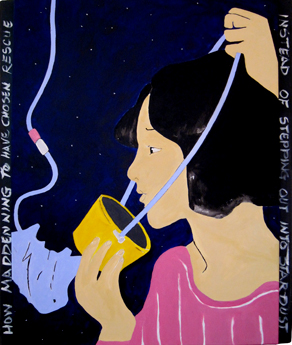Christina Maile
New York,
USA
I grew up in Bedford Stuyvesant, Brooklyn in the 1950’s and 60’s when it was still a tough and very poor neighborhood. My father came from the Dayak tribe in Borneo, my mother and grandmother were from Trinidad.
Since we did not live within the parochial school district, my mother gave the school an address that was not our real home address. Passing that house every day on my way to and from school, I began to imagine what it would be like to live there, be a completely different person, and have a completely different life. I began to tell stories.
In the 1970’s I with other playwrights founded the Westbeth Playwrights Feminist Collective. For 5 years we produced plays - our own and others - parades, poetry readings, fundraisers, etc. As one of the first feminist theater groups in the US, we believed in not only producing the works of feminist writers, and providing opportunities for feminist directors and actors (we used both men and women actors) , but also to provide jobs and theatrical experience to women working backstage lighting design, stage design, stage managing, music, etc.
After 5 years, the group disbanded to pursue the career paths our work had striven to open. With a growing identification with gender and landscape, I became a landscape architect.
I worked in the South Bronx designing gardens in abandoned lots, as well as working with children with AIDS in designing therapy gardens. I became a construction supervisor which at the time was highly unusual for a woman and a builder of playgrounds and parks in New York City.
I came to the visual arts via a superb painter and teacher, Dan Rice who said making art is to experience your own experience.
In 2013 I received a Pollock-Krasner Foundation grant, and a studio grant from the Joan Mitchell Foundation for my painting.
I learned recently that in the Dayak culture, women as well as men were respected for many skills. Women were expected to know how to build houses, to carve, to hunt , and had equal rights in status. Sometimes I wish my father had told me about that when I was growing up. Or maybe he thought I already knew.
Feminist Artist Statement
The body as both object and subject is central to my work, and also is central to the imagery of my landscapes and sculpture. In my feminist art practice, the relationship between actual experience and narrative is complex and always in flux. Every space I inhabit is also a one of displacement.
Underpinning it all is Borneo and Trinidad - the islands which gave my family its history of hunting and small farming, of skin color and hierarchy, of colonialism and photographs, of the lure of missionary religion against the jealousy of spirits. Their narratives became part of my interior compass helping me to navigate not only difficult times, but also to establish an active, perceptual response that was both trickster and rebel.
My road to feminism started, although I did not know it, with my twelve year education in Catholic schools. During my long hours of detention under the uncompromising, vacant stares of any one of the St Joseph’s nuns, I imagined the Virgin Mary as a super hero who was totally shocked by their behavior towards me, and dressed in super power jeans and trailing a veil that was also a cape. She would fly me to distant places where we would plot my success in the world. On the days dedicated to her life’s events, we sang songs in front of her statue, which were extremely beautiful, and for me celebrated a secret pagan, nature-based freedom that went beyond priests, males, nuns, family, rules and obedience.
My recent series, “Mother and Child”, refers to the nature based African spirits of my ancestors. I imagined their rescue and journey home would look as gentle and as purposeful as a mother saving her child.
Other works, such as “2 out 3 Dayak Women Convert to Christianity” and “Father E” are based on family narratives. My recent sculpture “Gladys” is in the form of effigies and a poem to my sister who died early from temptation and despair.
I am now involved in creating a series of works about gender and landscape in monoprints and collograph format. These works investigate women’s separation from landscape, a geography of spontaneity and risk, to be replaced by a geographical embodiment that civilizes women within the spatio-fabric constraints of imposed modesty, mirrors and veils.

Danger Woman #2
Websites
Contact
EmailCV
PDF DowloadText, images, audio, and/or video in the Feminist Art Base are copyrighted by the contributing artists unless otherwise noted. All rights reserved.






